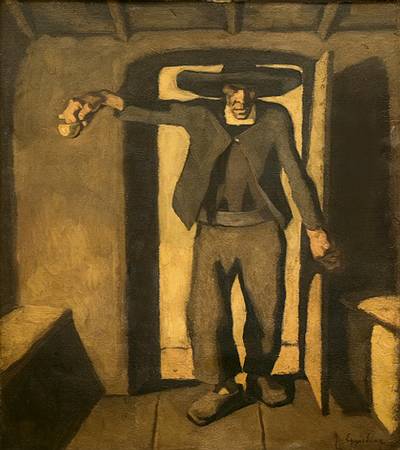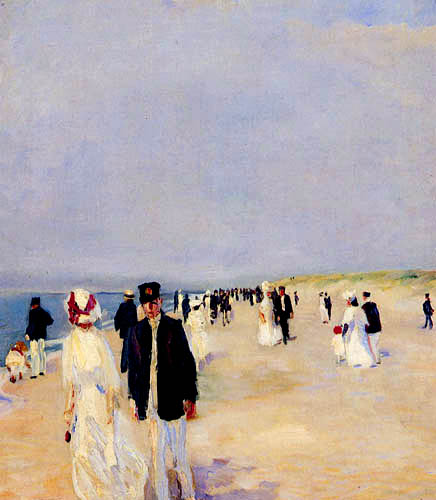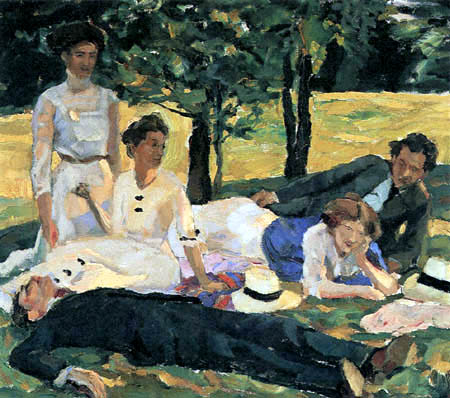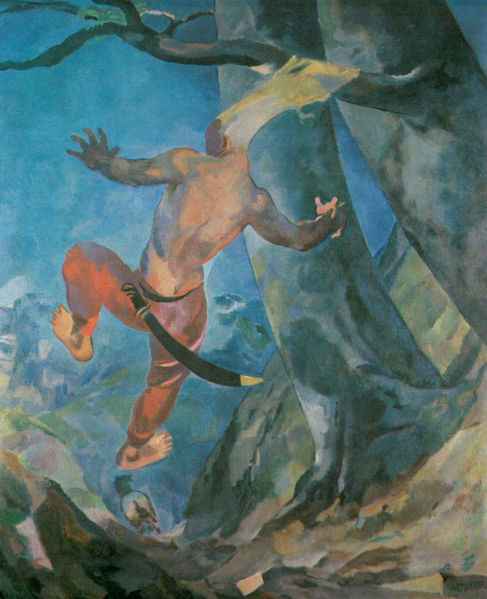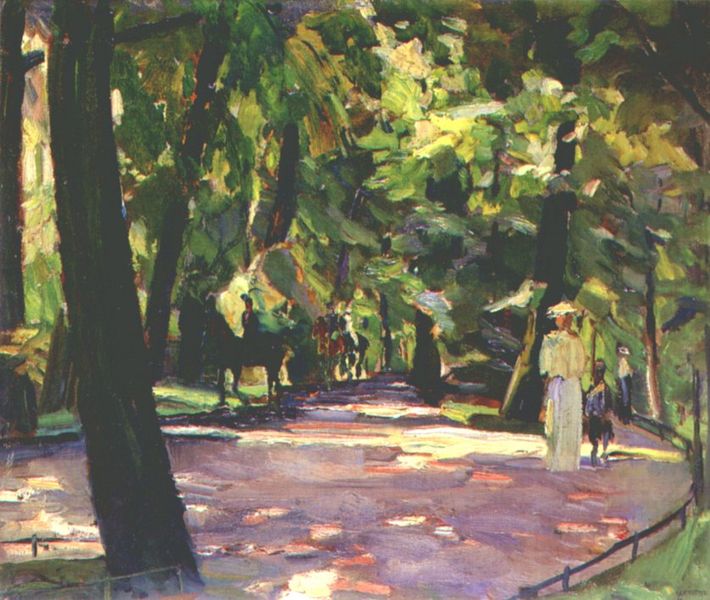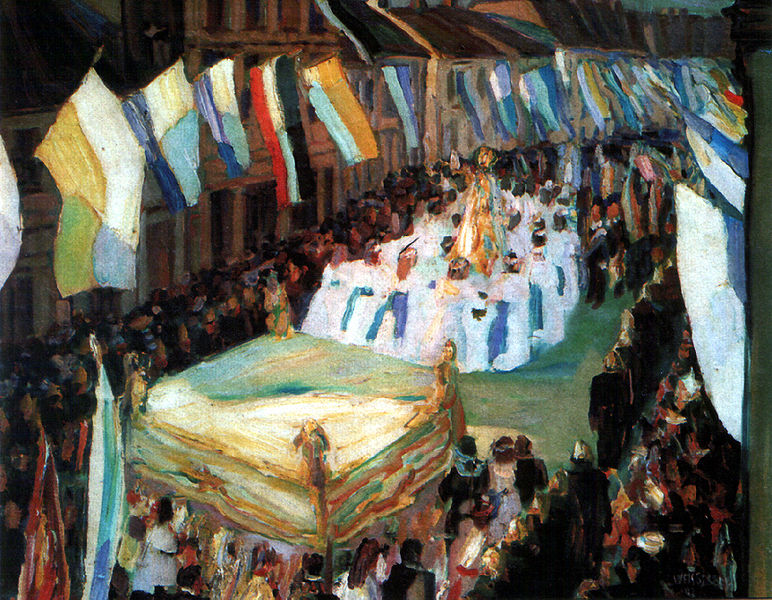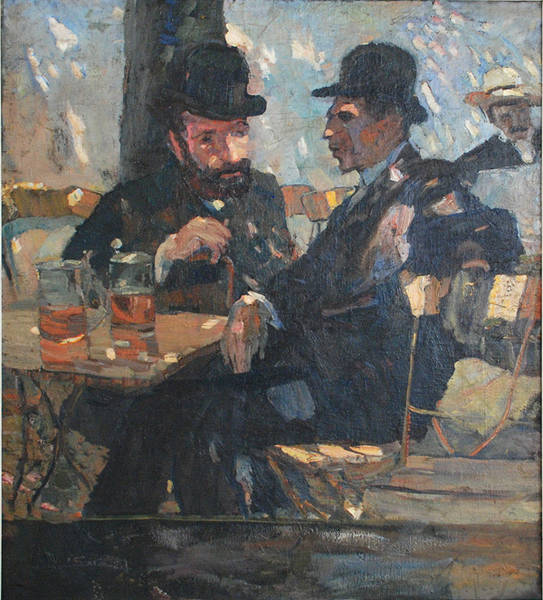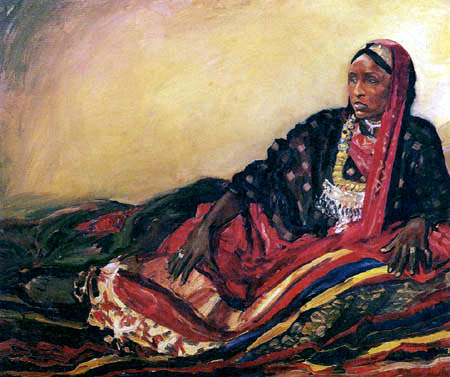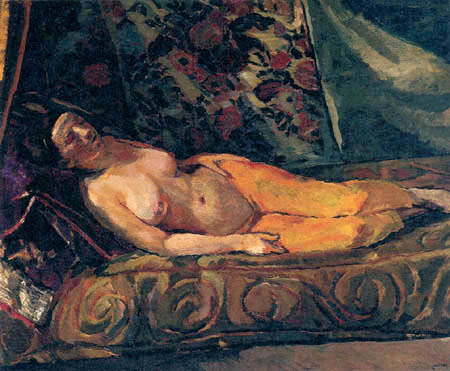<Back to Index>
- Physicist Jean Baptiste Biot, 1774
- Painter Albert Weisgerber, 1878
- Women's Rights Activist Raden Ayu Kartini, 1879
PAGE SPONSOR
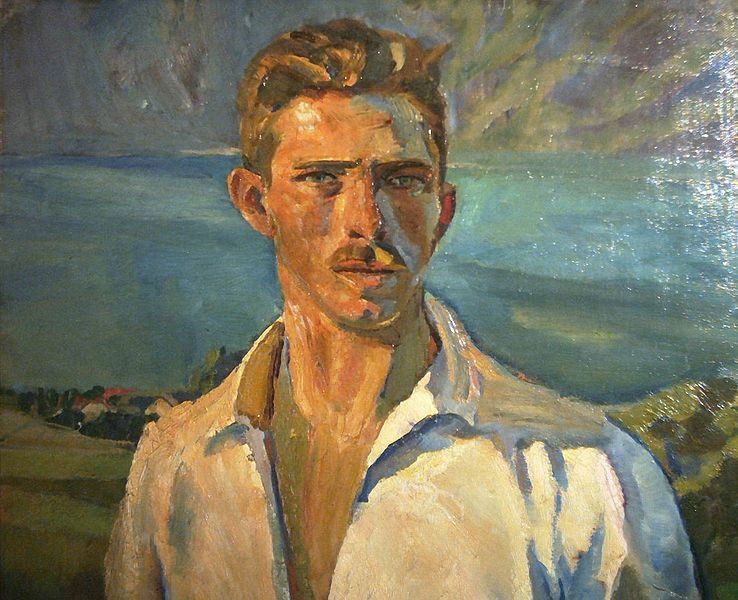
Albert Weisgerber (* April 21 1878 in St. Ingbert , † May 10 1915 killed at Fromelles in French Flanders) was a German painter and graphic artist. Weisgerber left behind an extensive body of work. His style falls between the German Impressionism and the early Expressionism. Weisgerber was the son of a St. Ingbert baker and innkeeper. During 1891 - 1894, he attended the district school in Kaiserslautern. In 1894, he began training as a decorative painter in Frankfurt. From 1894 to 1897 he attended art school in Munich, after which he studied from 1897 to 1901 at the Academy of Fine Arts, Munich, first with Gabriel Hackl and later with Franz von Stuck. Since 1897, he worked as an illustrator for the magazine the youth. During his studies, Weisgerber met Hans Purrmann, Paul Klee, Wassily Kandinsky, Willi Geiger, Hermann Haller, Max Slevogt and Gino de Finetti, with whom he then shared a lifelong friendship. In 1898 he founded the club Forward torch with friends, among them the artists Alfred Kubin, Rudolf Levy and Alfred Lörcher. In 1902 he served his military service in Munich. The following year, Weisgerber often stayed in St. Ingbert, where he made a series of beer garden images. On trips, including to Paris, he saw the works of Impressionists and other major artists and got to know Matisse. There he was influenced by Toulouse-Lautrec, Cezanne , Manet and El Greco, and this became clearly visible in his painting style. In 1904 he met at the Munich café scene Pohl Margaret, whom he married. In
the Munich scene he made in subsequent years the acquaintance of
renowned artists, writers, journalists and social critics some of whom
he painted. His most important portraits were those of Scharf and Heuss. International recognition brought in 1906 acquisitions by the Munich Pinakothek (Neue Pinakothek) and the Städtische Galerie in Frankfurt. During a trip to Florence (1909),
in which he accompanied Finetti, he came into contact with the Italian
Quattrocento, and adopted a new artistic style. Under these influences he created his first pictures from the Sebastian cycle. In the following years he turned more and more to religious themes (Absalom, Jeremiah, David and Goliath, etc.). In 1911 he had his first exhibitions in Munich and Dresden. In the same year he painted one of his most famous works, the Hofgarten in Munich. A
year later, he exhibited at the Galerie Cassirer (Berlin), at the
special covenant Exhibition (Cologne) and the Kunsthaus Zurich. In 1913 Weisgerber founded with, among others, Alexej von Jawlensky, Paul Klee and Alexander Kanoldt, the Artists' Association New Munich Secession, and he became its first president. The first exhibition of the Secession was in the fall of 1914, half a year before his death. Albert Weisgerber was killed on 10 May 1915. He was a lieutenant and company commander of the Bavarian Reserve Infantry Regiment 16 west of Lille. In June of that year, his body was transferred to Munich and was buried in Munich's North Cemetery. Weisgerber's paintings were classified, like those of many other modern German artists, by the Nazis as "degenerate art" and were confiscated. They were not destroyed but rather sold in auctions. The then mayor of St. Ingbert Dr. Norbert Schier purchased an extensive collection of Weisgerber works (oil paintings, prints, documents). After
the war, Weisberger's widow filed claims for restitution, which resulted in a court case. The
widow filed on the basis of a Western Allies' dictum,
which canceled contracts involving the sale of assets that had been confiscated by
the Reich. In 1951,
both parties concluded a settlement in which the rights of the widow against
the town of St. Ingbert have been acknowledged and she was compensated
in the amount of 5 million francs (about 30,000 € today's purchasing power). Over the years, the city acquired more oil paintings, prints and craft work. They formed a dense and representative cross-section of the work of the artist. After establishing the "Albert Weisgerber Foundation", the town of St. Ingbert has a permanent Albert Weisgerber exhibition housed in the newly created Museum St. Ingbert". The museum was founded in 1992, with funding from the Albert Weisgerber Foundation, the City of St. Ingbert and the Saar Pfalz-Kreis. A new museum was planned to open in 2009. The work Absalom (1914) is owned by the Hamburger Kunsthalle. Another version of this image is owned by the Museum Saarland (Saarbrücken). It also owns the work riding in the English Garden (1910). The town of St. Ingbert awards since 1958 one of the oldest and most prestigious art prizes of the Saarland, the Albert Weisgerber Award for Visual Arts. It is recognizing an artist's oeuvre during a three year cycle and it awards a total of 21,000 €.
